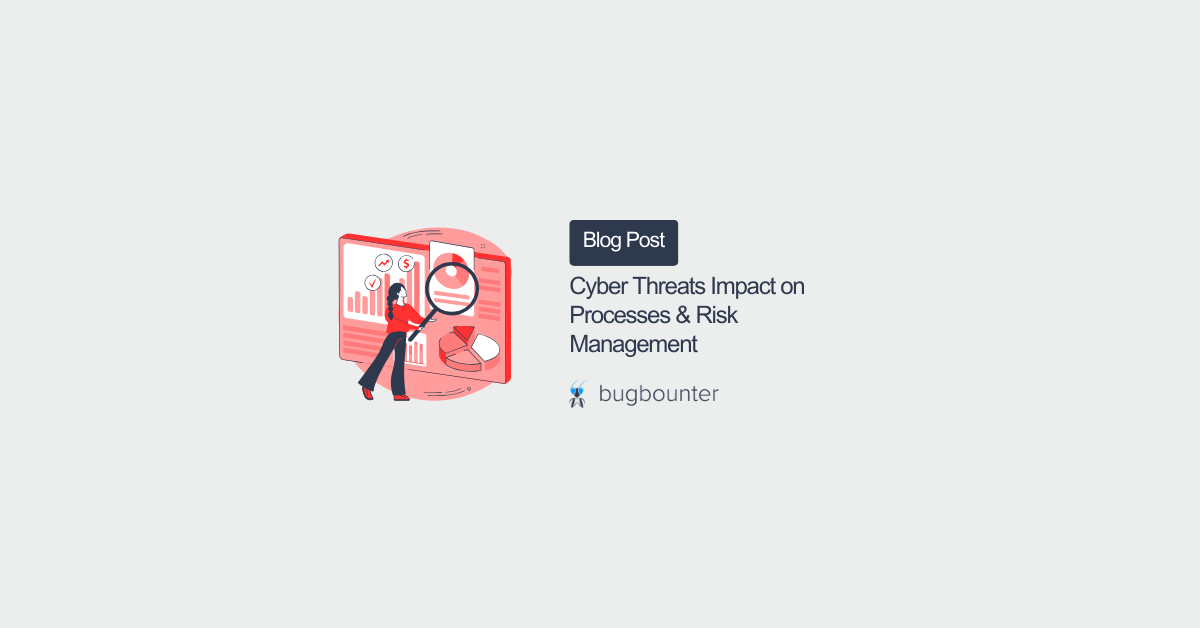Cyber Threats Impact on Processes & Risk Management
In the rapidly evolving landscape of cybersecurity, organizations face unprecedented challenges in managing cyber risk across their enterprise. The intersection of cybersecurity and risk management has become more critical than ever. Let’s delve into the essential aspects of this complex landscape and explore how innovative solutions, such as bug bounty platforms, can play a pivotal role in safeguarding against cyber threats.
Understanding Cybersecurity
Defending Beyond Digital:
Cybersecurity encompasses practices to safeguard not only information, networks, and digital infrastructure but also physical devices and premises. It involves a comprehensive set of methods, processes, and technologies to protect data, systems, and networks from a myriad of threats, including unauthorized access, attacks, disruptions, and theft.
Key Aspects:
- Physical Security: Measures to protect computer systems from unauthorized physical access or damage.
- Network Security: Protection against unauthorized access using firewalls, antivirus systems, and encryption.
- Application Security: Safeguarding software applications from attacks and manipulations.
- Information/Data Security: Protecting enterprise data through encryption, access control, firewalls, and authentication protocols.
Understanding Cyber/IT Risk Management
Strategic Planning for Resilience:
Cyber and IT risk management involves identifying, assessing, prioritizing, managing, and responding to risks associated with information, IT assets, and digital technologies. This proactive approach requires strategic planning and informed decision-making to mitigate potential impacts on an organization.
Key Processes:
- Identify: Inventory digital assets, potential threats, and vulnerabilities.
- Risk Assessment: Systematic evaluation of vulnerabilities, threats, and potential impacts.
- Risk Mitigation: Development and implementation of strategies to address identified risks.
- Monitoring and Response: Continuous monitoring of assets, systems, and networks with an incident response plan.
- Review and Update: Regular review and updates to adapt to changes in the threat landscape and business environment.
Examining the Similarities and Differences
Overlap and Complementarity:
- Protection: Both practices aim to protect enterprise assets from cyber threats.
- Threat Awareness: Improving understanding of the evolving risk landscape.
- Minimize Impact: Reducing the likelihood and impact of threats on the organization.
Key Differences:
- Scope and Focus:
- Cybersecurity: Primarily focuses on protecting systems, networks, and data.
- Cyber Risk Management: Encompasses a broader focus, considering business impact and financial consequences.
- Objectives:
- Cybersecurity: Establish a secure environment, protect data, and prevent unauthorized access.
- Cyber Risk Management: Identify, assess, and mitigate potential risks to information assets.
Integrating Cybersecurity and Risk Management
While cybersecurity and risk management share common objectives, they adopt distinct perspectives and methodologies. Cybersecurity is a tactical, hands-on approach to defending assets, while cyber risk management provides a strategic foundation to assess and mitigate a wide variety of risks. Integrating both disciplines ensures comprehensive protection and effective risk mitigation against an ever-evolving threat landscape.
Bug Bounty Platforms: Innovative Solutions in Cybersecurity
In the quest for robust cybersecurity and risk management, organizations are turning to innovative solutions like bug bounty platforms. These platforms leverage the power of crowdsourcing to identify and address vulnerabilities in digital systems. By engaging ethical hackers worldwide, organizations can proactively discover and remediate potential threats, enhancing their overall cybersecurity posture.
Conclusion
In conclusion, managing cyber risk requires a holistic understanding of potential consequences and effective risk mitigation strategies. Cybersecurity and cyber risk management, though distinct, are integral components of a comprehensive defense strategy. By integrating both disciplines and leveraging innovative solutions, organizations can build a proactive defense against the evolving cyber threat landscape.
BugBounter provides companies of all sizes a 24/7 available, flexible, and diverse bug bounty platform. Contact us to learn more.





